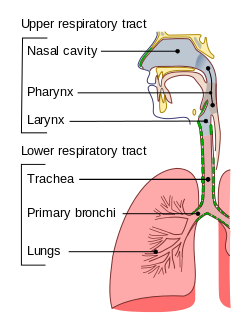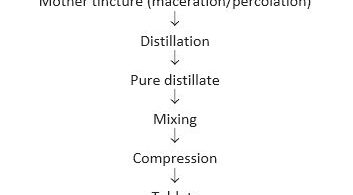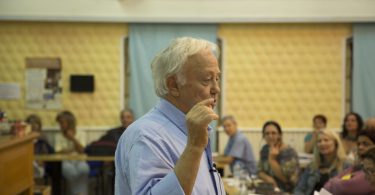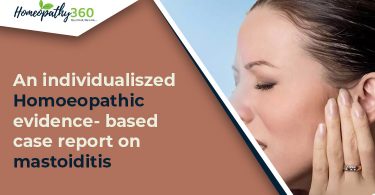-by Dr Arunava Nath and Dr Syed Afsar Ali
Abstract: Lower respiratory tract infections include the infections affecting the lungs below the voice box such as pneumonia, bronchitis, and tuberculosis. It can affect the airways, like bronchitis, or the air sacs at the end of the airways, as in the case of pneumonia. A neglected case of pneumonia is presented here which was treated with Sulphur. The medicine was selected based on the peculiar, characteristic symptom presentation of the case. Though the case met with initial aggravation subsequent amelioration with the restoration of health was noteworthy.
Keywords: Lower respiratory tract infections, miasmatic diagnosis, homoeopathy
Abbreviations: WHO: World Health Organization, RTI: Respiratory Tract Infections, LRTI: Lower Respiratory Tract Infections, RSV: Respiratory Syncytial Virus, ICD: International Classification of Diseases.
Introduction
Acute respiratory tract infections are one of the leading causes of morbidity and mortality among children in both developed and developing countries. World Health Organization (WHO) estimated a burden of respiratory tract infections in 2010 since then four and a half million deaths are estimated due to respiratory tract infections among children every year. In India, 1.2 million deaths have been reported among children due to respiratory tract infections (RTI) among 5.9 million deaths globally.1 India has the highest number of deaths among children < 5 years of age and most of them are due to respiratory tract infections. These infections are broadly divided into upper and lower respiratory tract infections. Lower respiratory tract infections are a more common cause of death than upper respiratory tract infections. Pneumonia and Bronchiolitis are the most common types of LRTI in children. Pneumonia accounts for most of the deaths in children of 5 years of age.2
The airway, or respiratory tract, describes the organs of the respiratory tract that allow air flow during ventilation. The airway can be subdivided into upper and lower one each of which has numerous subdivisions as follows:
Upper Airway:
The pharynx is the mucous membrane-lined portion of the airway between the base of the skull and the oesophagus and is subdivided as follows:
- Nasopharynx
- Oro-pharynx
- Hypopharynx
The larynx is the portion of the airway between the pharynx and the trachea, contains the organs for production of speech.
|
RESPIRATORY TRACT
Source: https://en.wikipedia.org/wiki/Respiratory_tract [cited 2019-04-25] |
Lower Airway:
The trachea is a ciliated, pseudostratified, columnar epithelium-lined, tubular structure supported by C-shaped rings of hyaline cartilage. The bronchi, the main bifurcation of the trachea, are similar in structure but have complete circular cartilage rings.
- Main bronchi
- Lobar bronchi
- Segmental bronchi
Bronchioles lack supporting cartilage skeletons and have a diameter of around 1 mm. They are initially ciliated and graduate to the simple columnar epithelium and their lining cells no longer contain mucous producing cells.
- Conducting bronchioles
- Terminal bronchioles
- Respiratory bronchioles
The alveolus is the final portion of the airway and is lined with a single-cell layer of pneumocytes and are in proximity to capillaries. They contain surfactant producing type II pneumocytes and Clara cells.
- Alveolar ducts
- Alveolar sacs 3
Lower respiratory tract infections include:
- bronchitis
- pneumonia
- bronchiolitis
- tuberculosis
Causes and risk factors:
Tobacco smoke can lead to a lower respiratory tract infection.
Infections in the lower respiratory tract are primarily the result of:
- viruses, as with the flu or respiratory syncytial virus (RSV)
- bacteria, such as Streptococcus or Staphylococcus aureus
- fungal infections
- mycoplasma, which are neither viruses or bacteria but are small organisms with characteristics of both
In some cases, substances from the environment can irritate or cause inflammation in the airways or lungs, which can lead to an infection. These include:
- tobacco smoke
- dust
- chemicals
- vapours and fumes
- allergens
- air pollution
Risk factors that make a person more likely to develop a lower respiratory tract infection include:
- a recent cold or flu
- a weakened immune system
- being more than 65 years’ old
- being under 5 years’ old
- recent surgery 4
Inflammation and innate immunity:
Acute inflammation features the accumulation of neutrophils and a plasma exudate outside of blood vessels. During pulmonary infection, neutrophils migrate out of the pulmonary capillaries and into the air spaces. After phagocytosis, neutrophils kill ingested microbes with reactive oxygen species, antimicrobial proteins, and degradative enzymes. Deficits in neutrophil quantity (neutropenia) and defects in quality (e.g., chronic granulomatous disease) predispose patients to opportunistic lung infections, as do deficiencies of compliments and immunoglobulins. Since neutrophils and plasma proteins mediate innate immune functions and are needed to prevent lung infection, acute inflammation can be considered an essential innate immune response in the lungs.5
Symptomatology:
Symptoms of lower respiratory tract infections vary and depend on the severity of the infection.
Less severe infections can have symptoms similar to the common cold, including:
- a stuffed up or a runny nose
- a dry cough
- a low fever
- a mild sore throat
- a dull headache
In more severe infections, symptoms can include:
- a severe cough that may produce phlegm
- fever
- difficulty in breathing
- a blue tint to the skin
- rapid breathing
- chest pain
- wheezing
Flu infections can affect both the upper and lower respiratory tracts.4
Diagnosis and laboratory investigations:
Clinical examination including inspection, palpation, percussion and auscultation along with proper case taking, enables a physician to diagnose a lower respiratory infection.
Laboratory investigations which can be suggested, depending on the situation are:
- pulse oximetry to find how much oxygen is in the blood,
- chest X-rays to check for pneumonia,
- blood tests to check for bacteria and viruses,
- mucus samples to look for bacteria and viruses.4
According to International Classification of Diseases:
2019 ICD-10-CM Diagnosis Code A15.0, Tuberculosis of lung 6
2019 ICD-10-CM Diagnosis Code J18.9, Pneumonia, unspecified organism 7
2019 ICD-10-CM Diagnosis Code J22, Unspecified acute lower respiratory infection8
Complications:
Complications of lower respiratory tract infections can include:
- congestive heart failure
- respiratory failure
- respiratory arrest
- sepsis, which is a blood infection that can lead to organ shutdown
- lung abscess
A person can take the following steps to prevent getting a lower respiratory tract infection:
- washing their hands frequently,
- avoiding touching the face with unwashed hands,
- staying away from people with respiratory symptoms,
- cleaning and disinfecting surfaces regularly,
- getting vaccines, such as the pneumococcal vaccine and MMR vaccine,
- getting a flu shot every year,
- avoiding known irritants, such as chemicals, fumes, and tobacco.4
Homoeopathic management:
In Organon of Medicine (§73), Dr Samuel Hahnemann has stated, “As regards acute diseases, they are either of such a kind as attack human beings individually, the exciting cause being injurious influences to which they were particularly exposed. Excesses in food, or an insufficient supply of it, severe physical impressions, chills, overheating, dissipation, strains, etc. or physical irritations, mental emotions, and the like, are exciting causes of such acute febrile affections; in reality, however, they are generally only a transient explosion of latent psora, which spontaneously returns to its dormant state if the acute diseases were not of too violent a character and were soon quelled.”9
Miasmatic diagnosis: comparison of the respiratory symptoms10
| Psora | Sycosis | Syphilis |
| Burning pain with band-like sensation around the chest. | Stitching pain in the chest. | Rawness and soreness in the throat. |
| Mainly affects the upper respiratory tract with recurrent catching of colds. | Features of in-coordination include dilatation of the bronchi and bronchioles. | Features of ulceration, destruction, cavity formation and pyogenic inflammation. |
| Cough is dry, teasing and spasmodic in type. | Hard, racking cough. | Cough paroxysmal in nature. |
| Scanty and tasteless expectoration. | Very little expectoration usually yellowish or clear. | Clear, sticky thread-like discharge. |
| Respiration slow and sallow. | Rapid respiration. | Dyspnoea before going to bed or while lying down. |
| < winter, cold > warmth in general, appearance of natural discharges. |
< humid, moist atmospheres, changes in the season. > lying on abdomen. |
< night and during morning. |
Repertorial rubrics (Kent’s Repertory) 11
| Rubrics | Medicines (highest grade) | Page no. |
| CHEST – INFLAMMATION – Lungs |
Acon. Ant-t. Ars. Bry. Carb-v. Chel. Ferr-p. Hep. Lob. Lyc. Merc. Phos. Puls. Rhus-t. Seneg. Sep. Sulph. Verat-v. | 835-6 |
| COUGH – DRY |
Acon. Alum. Ars. Ars-i. Bell. Brom. Bry. Calc. Carb-an. Chin. Hyos. Ign. Iod. Kali-c. Lach. Mang. Nat-act. Nat-m. Nux-v. Petr. Ph-ac. Phos. Puls. Rumx. Spong. Sulph. Tub | 786 |
| COUGH – TORMENTING | Ars. Bell. Caust. Dros. Ip. | 809 |
| COUGH – HARD |
Bell. Kali-c. Stann. | 793 |
| COUGH – RACKING |
Agar. Bell. Bry. Carb-v. Caust. Coc-c. Ign. Kali-c. Merc. Nux-v. Phos. Puls. Stann. Sulph. | 801 |
| EXPECTORATION – SCANTY |
Phos. Stann. | 818 |
| EXPECTORATION – VISCID |
Alumn. Arg-met. Arg-n. Coc-c. Hep. Hydr. Kali-bi. Phos. Puls. Samb. Seneg. Stann. | 820 |
Repertorial rubrics (Murphy’s Repertory) 12
| Rubrics | Medicines (highest grade) | Page no. |
| Lungs – BRONCHITIS, infection |
AESC. ANT-T. ARS. BAR-M. BRY. DROS. FERR-P. HEP. IP. LYC. NAT-S. PHOS. PULS. RUMX. SANG. SENEC. SIL. SPONG. STANN. TUB. | 1436 |
| Lungs – PNEUMONIA, infection, inflammation, lungs |
ACON. ANT-T. ARS. ARS-I. BRY. CARB-V. CHEL. FERR-P. HEP. KALI-C. LOB. LYC. MERC. PHOS. PULS. RHUS-T. SENEG. SEP. SULPH. VERAT-V. | 1450 |
Therapeutic Approach 13
| Sl. no. | Medicines | Symptomatology |
| 1 | Aconitum napellus | As an intercurrent remedy for congestion of blood to chest, with short cough, haemoptysis, and disposition to pneumonia. |
| 2 | Acalypha indica | Tubercular deposits in apex of left lung; haemoptysis of bright blood in the morning, dark and clotted in the evening; cough aggravated at night and in paroxysms |
| 3 | Ammonium muriaticum | Cough at every deep inspiration and when lying on right side, aggravated after drinking and when lying with head low; coldness between shoulders. |
| 4 | Arsenicum album | Cough brought on or aggravated in the evening when lying down or in the morning when rising; great dyspnoea when lying down, day or night, has to be bolstered up to half or full sitting posture. |
| 5 | Carbo animalis | Last stages of pneumonia and suppuration of right lung, aggravated by lying on right side; suffocating, hoarse cough producing shaking of the brain as if the brain were loose in the head. |
| 6 | Drosera rotundifolia | First stage of tuberculosis, more or less extensive dullness on percussion; diminished vesicular murmur; rough inspiration, prolonged expiration. |
| 7 | Lycopodium clavatum | Maltreated or neglected pneumonia, passing into a typhoid state, particularly if suppuration of the lungs impends, with adynamia and night-sweats. |
| 8 | Phosphorus | Pleuro-pneumonia, with extensive implication of the pleura; hepatisation, with mucous or bloody sputa; coughing increases the difficulty of breathing; during the third stage purulent infiltration of the parenchyma, with mental depression. |
| 9 | Pulsatilla pratensis | Broncho-pneumonia in chlorotic and anaemic women; a loose cough lingers after the resolution of a severe inflammation; debility and inertia of mind and body, free, yellowish-green sputa. |
| 10 | Sepia officinalis | Central third of right lung especially affected; dry cough, aggravated in the evening before and after going to bed; free expectoration in the morning or expectoration only at night; excessively foetid sputa. |
| 11 | Silicea terra | Profuse discharge of fetid pus; nightly paroxysms of cough with tickling in suprasternal fossa; cough provoked by cold drinks, ameliorated by inhalation of moist warm air and increased by rapid motion. |
| 12 | Sulphur | Pneumonia assumes a torpid character, with slow solidification of the lungs; there may still be much rattling of phlegm in chest;frequent weak, faint spells, and flushes of heat; feels suffocated; wants doors and windows open; constant heat on top of head. |
Research arena:
- A retrospective observational study was carried out to explore the effect of the specific extract of duck liver and heart (Oscillococcinum®, Boiron SA, Messimy, France) in the prevention of RTIs, by comparing two groups of patients, one that took the medicine and the other that did not. The results indicated that the evaluated homoeopathic drug had a preventive effect on the onset of RTI episodes. 14
- A prospective multicentre observational study was carried out by Nayak et al,which showed that the homoeopathic medicines, Phosphorus and Arsenicum album were most frequently indicated and useful medicines in the treatment of acute trachea-bronchitis. It was inferred from the study that homoeopathy had a positive role in the management of acute trachea-bronchitis. 15
Case history:
(A case of Bronchial Catarrh from Kent’s Minor Writings on Homoeopathy) 16
A 22-year-old lady came to St. Louis on 11th December 1883, and had been sick for some time – much of that period had been spent in bed. She had been sick of what was called pneumonia from which she never had recovered. There was some coarse rattling in the bronchial tubes but she expectorated very little although she coughed very much. Expectoration was scanty, salty in the morning. Entering a warm closed room induced suffocation; she was compelled to have the windows open; much better in the open air. She could not endure warm clothing; a general feverish feeling had always been present. She was very fond of bathing which chilled her body and gave relief. There was burning sensation over her and she put them out often to cool them. Headache over both eyes, with burning sensation in the eyes. Teeth were decayed and black; she had periodical deafness.
Mental picture –
Horror of men. She used to live with her sister, whom she was very jealous of, even upto selfishness. Nymphomaniacal symptoms when in bed with her sister, she used to embrace and kiss hotly, then tremble and become prostrated.
Physical generals –
- Cravings: salty and sweet things and fat meat
- Aversion: lean meat
- Stool: hard, costive, difficult passing stool
- Sweat: mostly at night
- Menses: duration: lasted for eight to ten days; character: dark clotted and excoriated the parts; associated with: leucorrhoea like white of egg before the menses, sometimes it became milk like.
General physical examination –
Crepitant and sub-crepitant rales could be detected. The feet were oedematous; emaciated almost like a skeleton.
Vital signs –
Temperature: 99.5oF;
Pulse: 100 beats/minute.
Symptomatology with respective medicines as suggested by Dr Kent-
Table 1
| Sl. No. | Symptoms | Medicines |
| 1. | She suffers from marked nymphomanical symptoms when in bed with her sister | Hyoscyamus, Platina, Cantharis, Phosphorus, Sulphur |
| 2. | The most peculiar symptom is the peculiar erotomania coupled with the selfishness and jealousy. | Sulphur |
| 3. | Aversion to men | Amm c., Puls., (Sulph.?) Lyc., Nat. m. (Sulphur is clinically verified, not given in repertory) |
| 4. |
In the morning she gets up a little sputa which tastes salty. | Ars., Lyco., Phos., Puls., Sep., Sulph. and others. |
| 5. | Craves fat which agrees | Mez., Nit. ac., Nux v., but Sulph |
| 6. | The constant feverish state, heat of the body compelling her to wear thin clothing. | Ant., Asarum., Colch., Iod., Lyc., Puls., Sulph. |
| 7. | The neglected pneumonia which seems the next most important factor not to be overlooked. | Lyco., Phos., Sulph. |
| 8. | The feet burn and she puts them out of bed to cool them off. | Calc., Lyc., Kali c., Graph., Puls., Phos., Sil., Sulph |
Case analysis
A difficult case presented with wilderness of symptomatology. The most peculiar symptoms were selected and the common little ones were left out. Sulphur covered all the symptoms with the characteristic erotomania coupled with peculiar sexual selfishness. Single dose was prescribed followed by homoeopathic aggravation after which the subsidence of symptoms began, and continued improvement was marked until optimal health was reached.
Remedial analysis with selection
Dr Kent had emphasised on two medicines Pulsatilla and Sulphur. The subject was fond of bathing and better in the open air, which would make one think of Pulsatilla. Sulphur patients are better in the open air with open windows along with the peculiar selfishness manifested in her disposition helped in framing the totality for the case. Author had given emphasis on the peculiar mind symptoms of the individual which led to the selection of higher potency of the indicated medicine.
Rx Sulphur 55m (Fincke) – one single dose was administered.
Follow up
Table 2.
| Date* | Change in symptomatology | Prescriptions |
| Six weeks later | The cough had mostly ceased, the swelling from the feet gone, erotomania entirely gone. She had gained flesh remarkably. | Sulphur 55m (Fincke) – one single dose was repeated |
| After two months | The medicinal action lasted for over two months. | Sulphur cm (Fincke) – was given |
| Later | She was in perfect health and perfectly free from her annoying symptoms. | No more medicine |
* Exact dates were unavailable.
The first dose of Sulphur was followed by a severe aggravation of the cough and chest symptoms, after which the subsidence of symptoms began, and continued improvement was marked until health was reached.
Conclusion –
From the above discussion, it is certain that the role of homoeopathy in the management of lower respiratory tract infections is quite encouraging. Prompt treatment can prevent further complications. However, if required assistance, conventional therapy can be sought for. Accordingly, the homoeopathic prescription should be based on the totality of symptoms giving importance to miasmatic dominance and the underlying pathology of the individual cases.
Conflicts of interest:
There are no conflicts of interest.
Acknowledgement:
The authors acknowledge Dr Deb Kumar Palit, Assistant Professor in the Dept. of Community Medicine, Pratap Chandra Memorial Homoeopathic Hospital & College, Kolkata for his valuable inputs on the subject.
References:
- Munagala VK, Mahesh RMU, Kandati J, Ponugoti M. Clinical study of lower respiratory tract infections in children attending a tertiary care hospital. Int J Contemp Pediatr. 2017 Sep; 4(5):1733-8.
- Francis BV, Abhilash TG. Study of acute respiratory tract infections in children. Internet J Sci Res. 2016; 5(9):1791-2.
- Ball M, Padalia D. Anatomy, Airway. StatPearls [Internet]. Treasure Island (FL): StatPearls Publishing. Last Update: April 5, 2019. Available on: https://www.ncbi.nlm.nih.gov/books/NBK459258/ [PubMed: 29083624]
- Fletcher J. Lower respiratory tract infections: What to know. Medical News Today [Internet]. Last reviewed Mon 11 February 2019. Available on: https://www.medicalnewstoday.com/articles/324413.php [cited 2019-04-25]
- Mizgerd JP. Acute Lower Respiratory Tract Infection. N Engl J Med. 2008 February 14; 358(7): 716–727. doi:10.1056/NEJMra074111.
- ICD 10 Data.com. 2019. [cited 2019-04-25] Available from: URL: https://www.icd10data.com/ICD10CM/Codes/A00-B99/A15-A19/A15-/A15.0
- ICD 10 Data.com. 2019. [cited 2019-04-25] Available from: URL: https://www.icd10data.com/ICD10CM/Codes/J00-J99/J09-J18/J18-/J18.9
- ICD 10 Data.com. 2019. [cited 2019-04-25] Available from: URL: https://www.icd10data.com/ICD10CM/Codes/J00-J99/J20-J22/J22-/J22
- Singh M, Singh S. First Corrected, re-translated & redacted edition of Organon of Medicine with word meanings below each aphorisms 6th & 5th editions by Samuel Hahnemann. 2nd ed. Kolkata: Homoeopathic Publications; 2015.p.199.
- Banerjee SK. Miasmatic Prescribing – Its Philosophy, Diagnostic Classification, Clinical Tips, Miasmatic Repertory, Miasmatic Weightage of Medicines and Case Illustrations.2nd Extended Indian ed., New Delhi: B. Jain Publishers (P) Ltd.; 2010. p.86-90.
- Kent JT. Repertory of the Homoeopathic Materia Medica. 4th ed., Calcutta: Economic Homoeo Pharmacy; 1982.p.786, 793, 801, 809, 818, 820, 835-6.
- Murphy R. Homoeopathic Medical Repertory – A Modern Alphabetical and Practical Repertory.3rd revised ed., B. Jain Publishers (P) Ltd; 2013.p.1436,1450.
- Lilienthal S. Homoeopathic Therapeutics. Reprinted., New Delhi: B. Jain Publishers (P) Ltd.; 2003.p.855-66, 871-8.
- Beghi GM, Labate AMM. Does homoeopathic medicine have a preventive effect on respiratory tract infections? A real-life observational study. Multidiscip Respir Med. 2016; 11:12. DOI 10.1186/s40248-016-0049-0
- Nayak et al. A prospective multicentre observational study to evolve the usefulness of group of homoeopathic medicines in the management of acute tracheobronchitis. Indian J Res Homoeop2011; 5(3): 20-6.
- Gypser KH. Kent’s Minor Writings on Homoeopathy. Indian reprint, New Delhi: B. Jain Publishers (P) Ltd.; 1988. p.101-3.
About the Author:
Dr Arunava Nath (Corresponding author) – Former PG Scholar, Dept. of Organon of Medicine, National Institute of Homoeopathy, Kolkata.
Dr Syed Afsar Ali, M.D. (Hom.) – Lecturer, Dept. of Organon of Medicine, National Institute of Homoeopathy, Kolkata.


 Conducting Passages
Conducting Passages 


